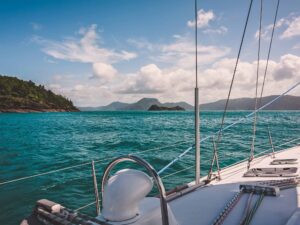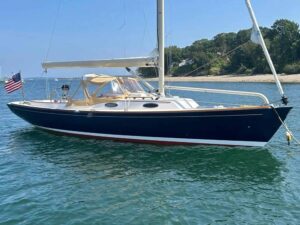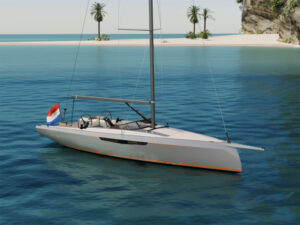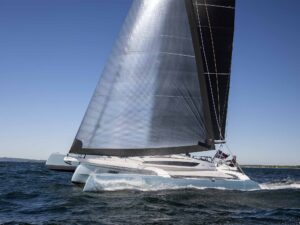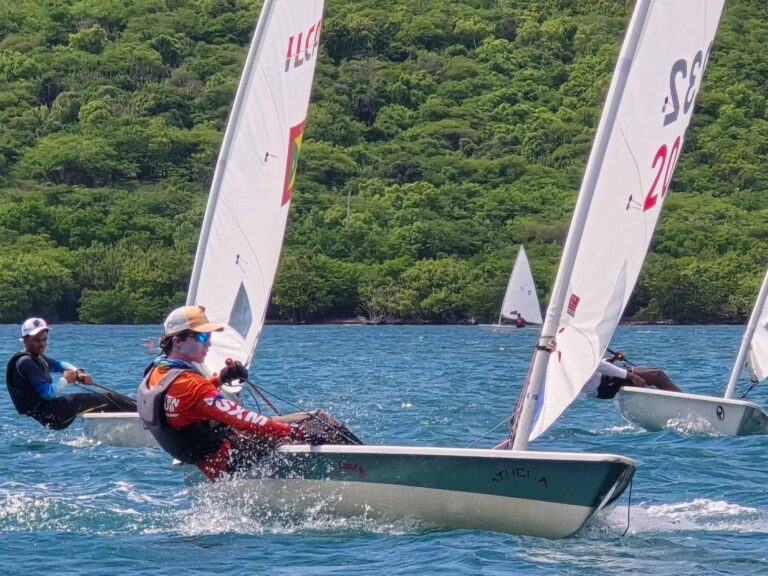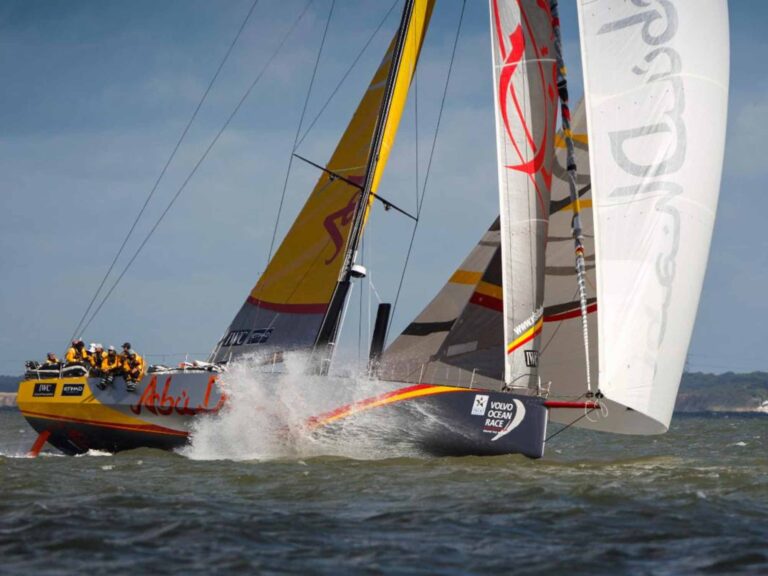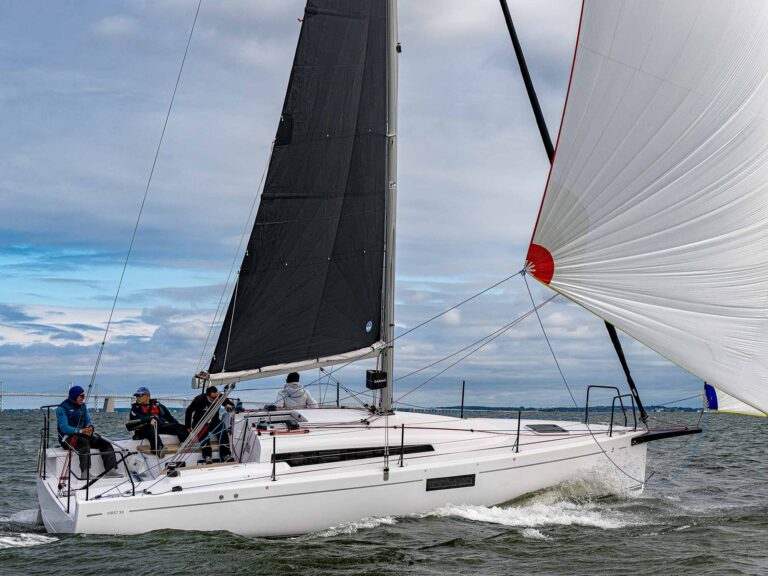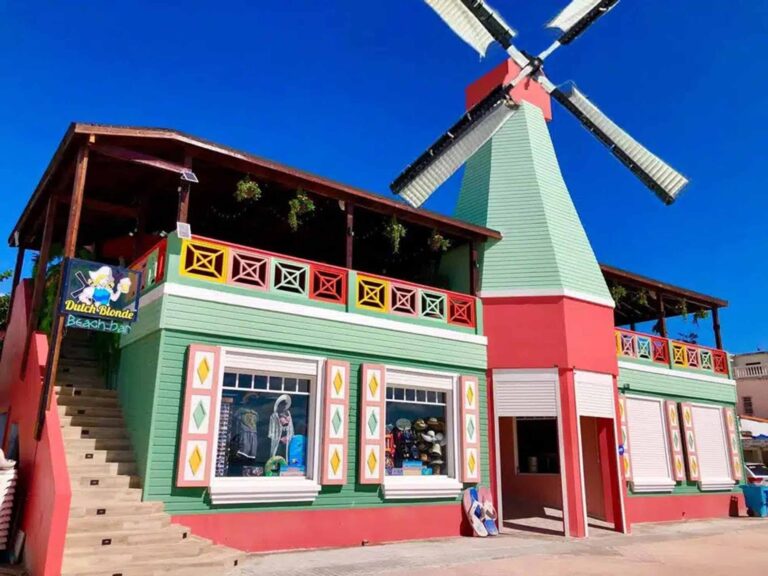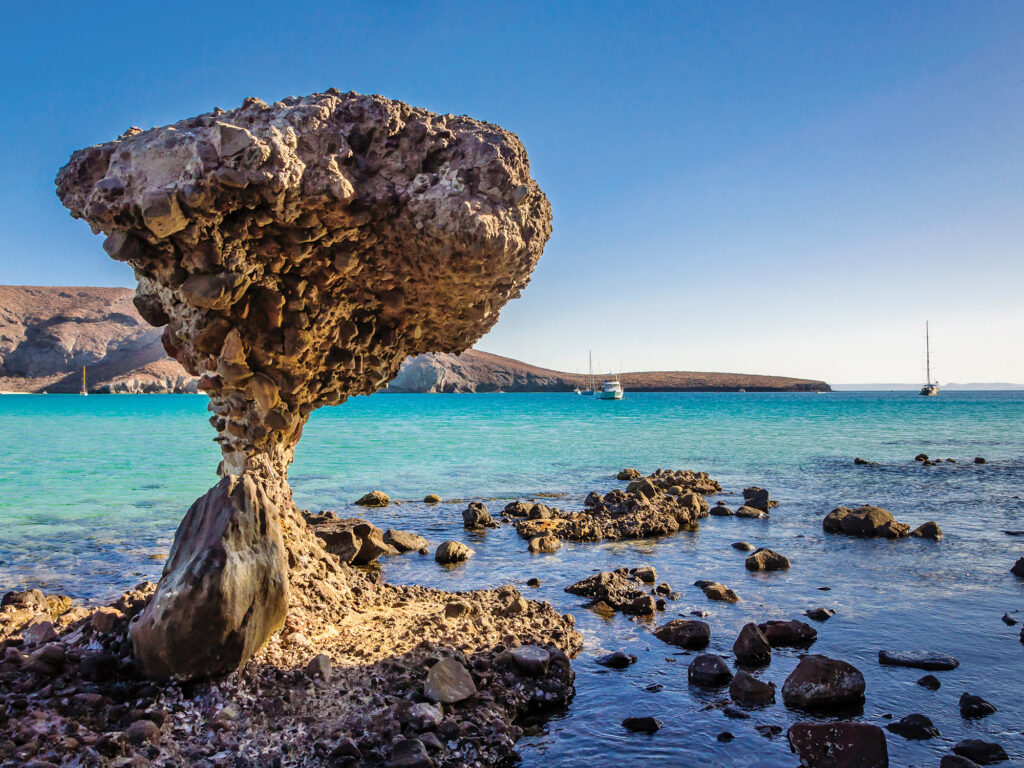
The last time my husband and I met friends to sail out of La Paz, Mexico, all hell broke loose. A decade ago, Rob and I arrived in Baja with one giant backpack each, ready to hitchhike across the Pacific for a year. We began by spending two weeks with our good friends Mark and Katie, who were at the end of a yearlong cruise in the Sea of Cortez aboard a 28-foot Pearson Triton. On a star-filled March night, after copious fish tacos and rounds of margaritas, we lit a Chinese lantern and sent it to the heavens to commemorate the beginning and end of our journeys. We each made a wish as we watched the lantern lift high and ride the offshore breeze out to sea.
The lantern backfired. That night, Katie and Mark were puking with food poisoning. The day pack containing my brand-new laptop and iPhone and Rob’s new camera equipment was stolen as we slept on the beach. Katie and Mark’s car was stolen too, along with most of their worldly goods packed inside for their return trip to the United States.
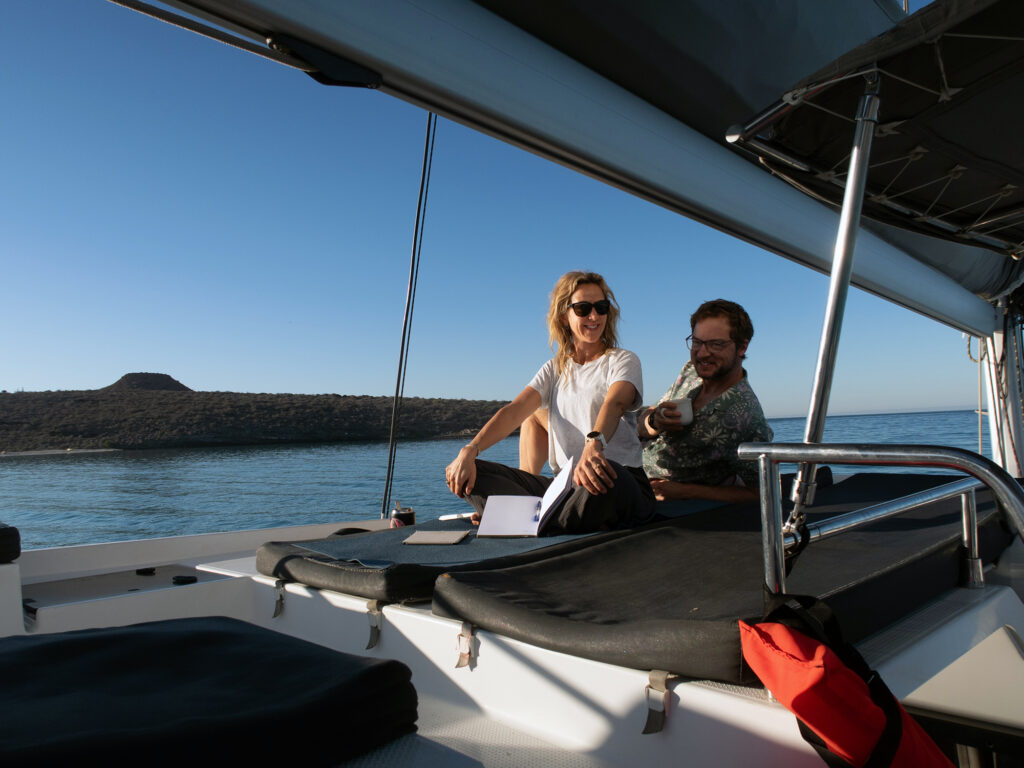
Bleary and shocked, we stumbled across the remains of the lantern. Somehow, it had circled back and landed in a heap right where we’d launched it. We dubbed this dramatic spate of bad luck the Curse of the Chinese Lantern.
I thought the curse had been broken a few days later when we spotted a red lantern floating by while sailing. Red is a symbol of good luck in China, after all. The following day, Mexican police found Katie and Mark’s car, along with Rob’s fishing rod and my beach towel and flip-flops (the important things). We enjoyed a lovely few days cruising around the turquoise coves of Espiritu Santo before parting ways with our friends.
Now, a decade later—as our flight was delayed for a sixth time en route to our chartered catamaran in La Paz—I glanced at our children running sprints in an empty corner, then whispered to Rob, “Do you think it’s the Curse of the Chinese Lantern?”
“Shhh!” He shook his head, eyes wide. “Don’t say it aloud.”
We’d chartered a 47-foot Fountaine Pajot with Dream Yacht Worldwide and invited friends who lived near us in Missoula, Montana, to join our crew. We’d planned a jam-packed week of hiking, snorkeling, and sailing lessons for the five kids and five adults. Because Rob and I were the co-captains, none of this could happen unless we got there. I crossed all my fingers and toes, and pictured cheerful, festive, benign red lanterns.
Finally, at 9 p.m., we arrived at Marina CostaBaja, north of La Paz. The boat was fully stocked with food, and the rest of the crew had already unpacked. Kim, the other mom, greeted me with a hug: “You’ll be happy to know we bought a dozen Chinese lanterns,” she said with a mischievous smile. “Should we light one now?”
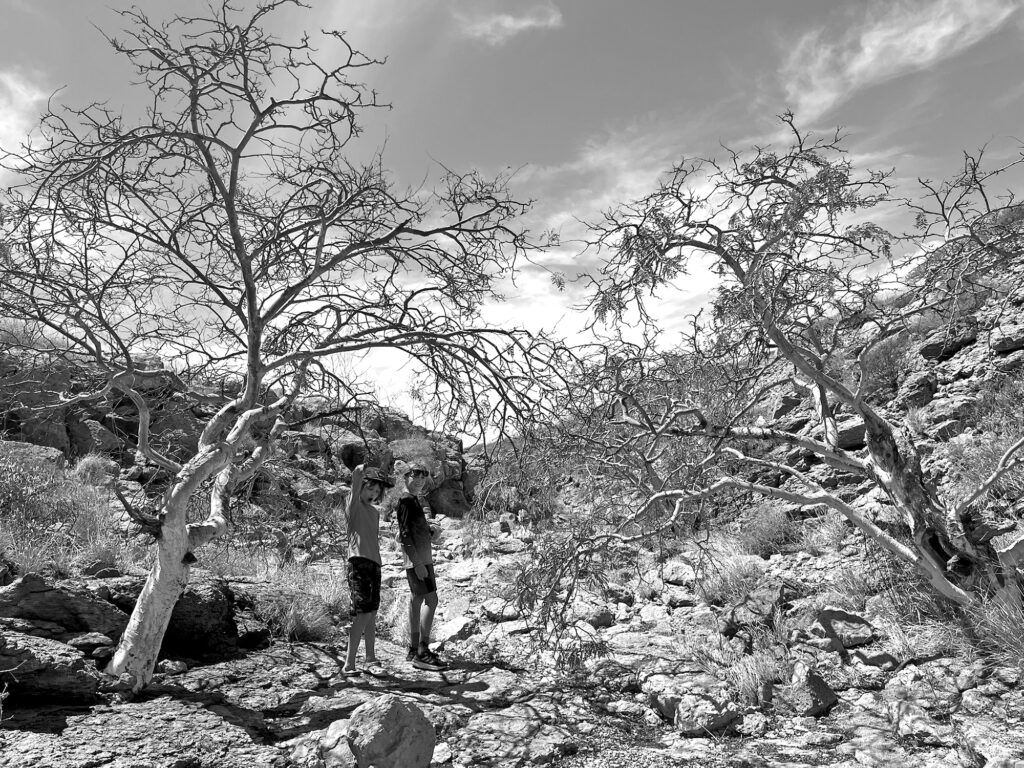
The kids traipsed around the boat to inspect their quarters. A small berth tucked beside the cockpit was perfect for a couple of tween boys, while bunks beckoned the first-grade girls. Rob and I shared a nervous glance when we learned that the boat had six heads (otherwise known as six headaches). I laid down the most important law of sailing: “Anyone who flushes toilet paper will walk the plank.”
The next morning dawned sunny and bright—and very, very windy. Baja is known for its el nortes—strong north winds that funnel fast and furious down the length of the peninsula. I’d hoped we could leave the marina by late morning before the predicted 30-knot gusts hit.
We grabbed a cappuccino at the cute marina coffee shop and hightailed it to the Dream Yacht office. Our chart briefing made it clear that La Paz was different from most other charter destinations: Bareboat captains need to be prepared to sail in the wilderness rather than bop between beachside bars. Once we left the base, there would be no cell service, no grocery stores and no marinas.
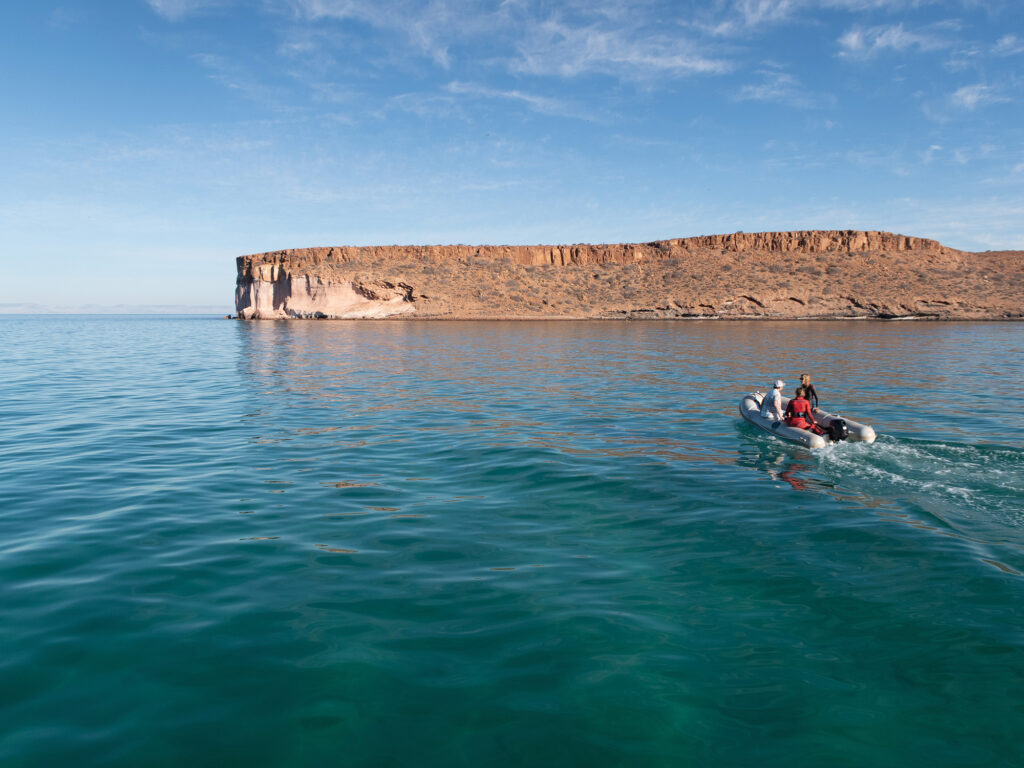
For Rob and me, this was a huge selling point of cruising in Baja. As the Dream Yacht sales pitch promised, this is the aquarium of the world. Nothing else compares to this unique landscape.
For the other adults, sailing off into a desert wilderness was a little more nerve-wracking. They ran to the marina store to grab extra snacks as the Dream Yacht staff prepared us well for the remote anchorages north of La Paz. They pointed out extra water stowed in the forward locker in case our tanks ran dry. They went over best practices for anchoring, and made sure we had handy color-coded information about the length of each mark on the 200-foot anchor chain. We also reviewed basic diesel maintenance, such as checking the strainers and oil levels.
Our plan was to keep longer sailing stints to a minimum. We figured we would make short hops between protected anchorages on the west side of Isla Espiritu Santo, a UNESCO World Natural Heritage Site and a national park 15 miles north of the marina. But then I stopped to chat with a captain on the docks. He recommended that we head farther north to islands along the Canal de San Jose, where he’d recently spotted five blue whales and hundreds of dolphins.
I pulled up my Windy and Navionics apps to calculate possibilities. We could tuck into the southernmost cove on Espiritu Santo that afternoon to wait out el norte, then take advantage of the next day’s calm to motor 25 miles to Isla San Francisco. It looked like we could ride the coattails of the next el norte back south at the end of the week. The new itinerary involved a lot more movement, but the crew gave an excited thumbs-up.
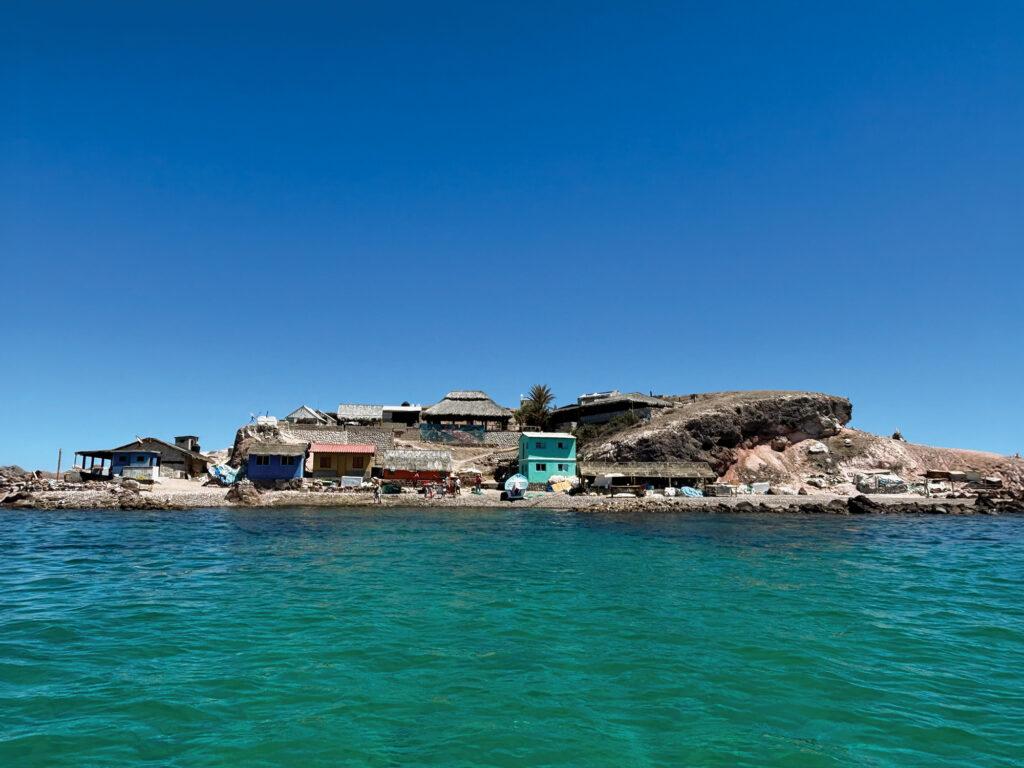
Before casting off dock lines, we gathered for a safety chat. I passed out Dramamine and instructed everyone to stay outside, in life jackets, to keep nausea to a minimum during our crossing to Espiritu Santo. With 25 knots of wind on the nose, we’d be slamming directly into the swells.
No one puked on the bouncy ride north, though everyone was relieved to reach the flat water inside Ensenada de la Dispensa’s cove. We shuttled crew to shore and taught the kids the “stingray shuffle”—dragging your feet through the shallows to scare away buried stingrays. The girls asked for piggyback rides after Kim shuffled into a crab that left a claw mark in her bare foot. We made a note to wear shoes on our next shore run.
Once everyone was happily building sandcastles and combing for seashells, Rob and I donned wetsuits and braved the 66-degree water to snorkel. We anchored the dinghy beneath sheer pink cliffs and dived overboard. Enormous grouper darted into hollows, and schools of goatfish and sergeant majors carpeted the healthy coral.

By sunset, ours was the only boat left in the bay. We feasted on pasta and sipped tequila cocktails while the kids performed death-defying rope swings on the halyard. A Mobula ray jumped on the horizon, flipping twice as if to applaud the sherbet clouds streaking the sky. We cheered its performance.
Everyone enjoyed smooth seas and desert sightseeing on the way north the next morning. Isla San Francisco’s rocky shores came into sight. So did a pod of dolphins. Our son and daughter sprinted forward to watch the bottlenose ride the bow wave, and drummed on the hull with their hands. Rob slowed the boat as I donned fins and a mask, and prepared to jump off the stern.
“What’s going on?” Kim asked.
“We’re kind of obsessed with dolphins,” I said.
When Rob gave me the high sign, I dived overboard. Usually, my attempts to swim with dolphins are fruitless, but this time I was rewarded with glimpses of a few pairs swimming 20 feet below, as well as one curious bottlenose on the surface that came to check me out.

Just a few minutes after I climbed back aboard, we were ready to drop anchor. Ours was once again the only boat in a beautiful bay. After a lunch of ceviche, the kids collected agates on the beach while the grownups took turns hiking a loop over the rocky mountains to a lovely crescent beach on the opposite side of the island.
The next morning, we circumnavigated Isla San Francisco to go whale-watching, stopping first at Isla Los Coyotes. This tiny rock, dotted with colorful homes, has a village of 15 people, the families of three brothers. We arrived just in time to buy a 20-pound yellowtail amberjack for $25 before the men took a boatload of fish to sell in La Paz. The kids bought necklaces and bracelets made in the village. Friendly locals pointed us toward a half-moon of guano-stained rocks nearby, recommending we snorkel there. We swam with parrotfish and triggerfish, and even coaxed the 6-year-old girls into their masks to see the underwater wonders.
Just as we picked up the anchor, the wind started to build. Within minutes, it was gusting over 30 knots. Whitecaps formed in the bay, lowering the odds of us spotting whales from slim to none. Instead, we sailed to the protected side of Isla San Francisco and anchored beside a gorgeous crescent of white sand with a half-dozen other sailboats. We let out plenty of scope and backed down hard to set the anchor. Then we jumped into the water to swim through thousands of baitfish. Later that evening, the kids turned on the boat’s underwater blue lights and spent an hour casting into the cloud of fish swirling beneath our stern.
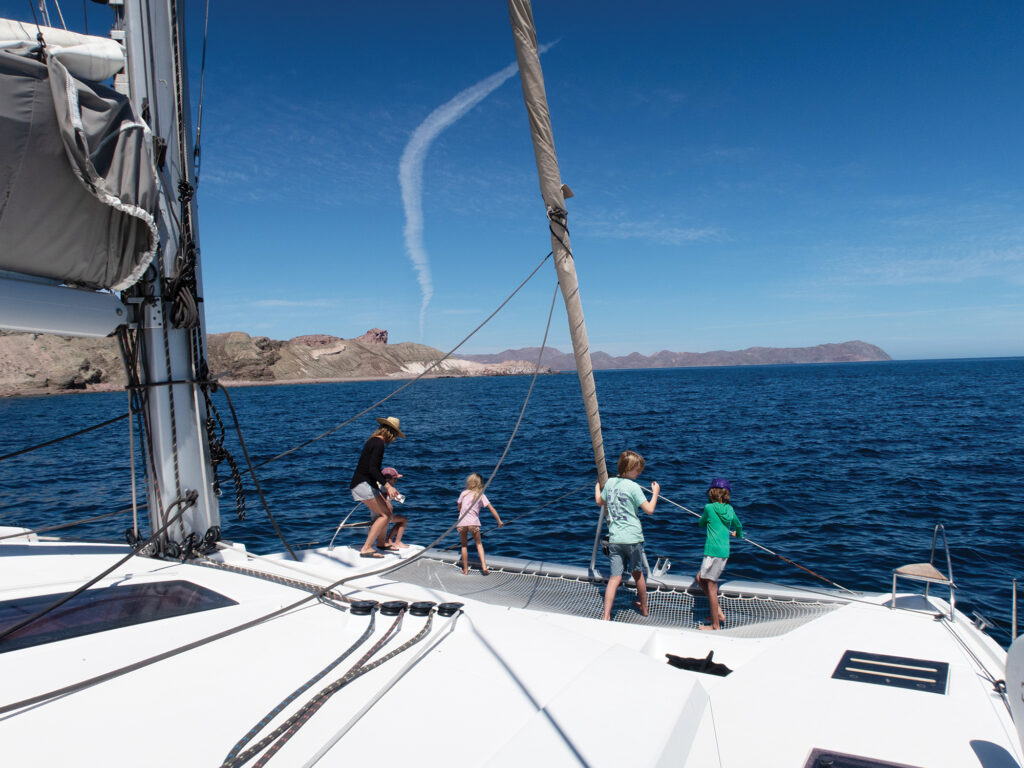
The next day dawned clear as a bell but even windier than the day before. We made good use of our layover day by exploring Isla San Francisco’s canyons and peaks. The boys scrambled over truck-size boulders and tucked into deep caves, then played stickball in the island’s low-lying salt flat. The girls enjoyed a dance party, pedicures and watercolors on the boat. We grilled more yellowtail for dinner because there’s no such thing as too many fish tacos.
The wind dropped into the low 20s by the following morning—perfect for a sporty downwind sail south to Isla Partida just north of Espiritu Santo. We practiced a few (very) controlled jibes and taught the crew how to hold a course while 5-foot swells pushed against the rudders. Our Fountaine Pajot cruised at a speedy 10 knots and handled like a dream.
In the otherworldly green waters of Ensenada Cardonal, orange cliffs and a spit of mangroves surrounded us. We hiked to the windward side of Partida, where a few people snorkeled and others read or napped in the sun. The winds petered out by sunset, letting us stargaze from hammocks on the bow. In the morning, we took turns paddleboarding over the calm shallows. The kids spotted a fever of 50 Mobula rays gliding like birds through the gin-clear water, along with porcupinefish, jacks and two turtles.

For our last night, we stayed at Ensenada Dispensa again. Everyone agreed that the solitude and scenery were worth the pain of a dawn departure back to the Dream Yacht base. The grownups finished the last bottle of wine while watching the kids’ wild rope swings. We snapped photos of their flying silhouettes against another spectacular sunset.
After dinner, I hosted an impromptu awards ceremony. Each member of the crew was given a luminous oyster shell to commemorate their sailing superpower: best provisioner, most improved snorkeler, best anchor mate, most valuable dishwasher.
Just before we entered the marina the following morning, Rob yelled, “Whale!” Everyone scampered up on deck, gasping in delight at a baby humpback’s spout a hundred yards off our bow.
I put my arm around my husband. “Well, I’d say that curse is ancient history.”
“Agreed,” he said. “I’m back in love with Baja. But I’m still never touching a Chinese lantern again.”
Montana-based travel writer Brianna Randall is a frequent CW contributor. Follow her sailing adventures at briannarandall.com.

